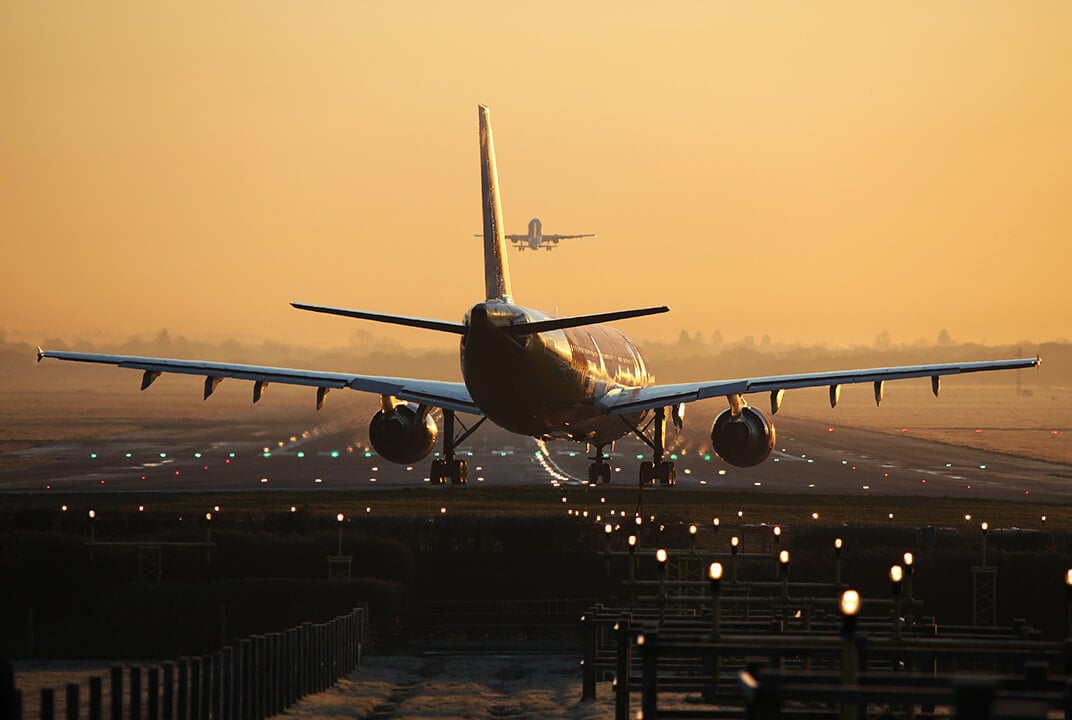Insight | SB-S receives approval from US Federal Aviation Administration
SB-S receives approval from US Federal Aviation Administration
Aviation
Inmarsat’s pioneering work in digital airline operations and safety is validated by US government regulator
The US Federal Aviation Administration (FAA) has delivered a ringing endorsement of Inmarsat’s SB-S service, after it certified the world’s first and only IP-digital aircraft operations and safety connectivity solution.
The FAA’s commendation is the latest chapter in the digital transformation of airline operations and is testament to Inmarsat’s pioneering work in this field. SB-S delivers powerful operational benefits to airlines via electronic flight bag applications, improved fleet and crew management, predictive maintenance, disruption management and aircraft health monitoring.
John Broughton, Inmarsat’s Vice President, Safety and Operational Services, immediately welcomed the news, saying the validation leaves Inmarsat in a market-leading position.
“Inmarsat stands alone as the only company with all of the security capabilities and features that are necessary to support applications like Iris (Inmarsat’s ground-breaking project with the European Space Agency that uses satellite-based datalink communication to enhance and modernise air traffic management) and next generation operations,” Broughton said.
“We’re the only company who can deliver both safety services and a big pipe of operational data in a 2MCU box. Other people are talking about these things but we’re still the only company who has actually done it.”
The safety benefits include improved communications with air traffic control (ATC), 4D tracking for optimised flight plans and arrivals, re-routing to avoid changing weather conditions, and flight data streaming (also known as Black Box in the CloudTM). Inmarsat is the only aviation satcom provider authorised to provide this service globally, including in the important markets of China and India.
Related service
A final validation
The FAA’s final validation upholds an earlier recommendation from its Performance Based Operations Aviation Rulemaking Committee (PARC) in February 2018. It validates the capability of SB-S to support air traffic services by providing direct data link communication between pilots and ATC.
The announcement follows the completion of a wide-ranging evaluation of SB-S, which began in June 2015 and included approximately 25,000 flights and seven aircraft types with Inmarsat partners Cobham Aerospace Communications, Collins Aerospace and SITA FOR THE AIRCRAFT, ASG and L2. Hawaiian Airlines and United Airlines both took part in what Broughton described as “a real life operational evaluation of the system” in live commercial environments, before it entered commercial service in April 2018. Shenzhen Airlines is also in flight with SB-S and it has been selected by Airbus as a Light Cockpit Satcom (LCS) solution on its A320 and A330 families.
Asked about the significance of the FAA ruling, Broughton noted that while there are other licensing requirements across the world, this certification is by far the most comprehensive of its kind, adding that the rest of the world looks to the FAA for guidance and advice in these matters.
“They’ve done the testing and they’ve done the validation,” he said, “so they’ve spent years making sure that this meets the performance standards that are required. Which are global, by the way.”
Setting a new standard
Philip Balaam, President of Inmarsat Aviation, also expressed his pleasure at the endorsement, saying: “Inmarsat has a rich history of providing cutting-edge, transformative services for the global aviation industry. We are proud to continue that tradition with SB-S, the world’s first solution for digital aircraft operations and safety. Inmarsat is the only satellite communications provider that can deliver these benefits to airlines. Receiving the FAA’s final approval is a milestone of huge significance, reinforcing Inmarsat’s global market leadership and validating the potential of SB-S to maximise airline operational efficiency and safety for many years to come.”
Combining cutting-edge satellite technology with secure IP broadband connectivity, SB-S provides the only global, high-speed IP connection to the aircraft, delivering incomparable protected data capacity that is wholly segregated from passenger connectivity services. SB-S provides airlines with capabilities and benefits no other satellite communications provider can deliver.
Indeed, the London School of Economics’ Sky High Economics report found that connected airline operations could save the aviation industry $15bn per year and 21.3m tonnes of CO2 emissions by 2035, thanks to major efficiencies in fuel savings, a reduction in delays, innovations in maintenance processes and more.
The platform provides real-time visibility into aircraft operations using Inmarsat’s world-leading L-band satellite constellation, which has underpinned global safety services for 40 years. Inmarsat is scheduled to launch two new, advanced L-band payloads to join its fleet in 2020 and 2021, further cementing the company’s long-term commitment to the services it offers over this spectrum.
Concluding, Broughton said that this latest milestone was further proof of Inmarsat’s dedication to innovation.
He said: “Inmarsat is the first and only satcom provider to offer a platform for digital aircraft operations and safety services and it continues our tradition of innovation and reinforces our market leadership. We were the first to introduce oceanic satcoms, and separation standards changed because of that, allowing more planes in a given airspace. Our GX offering, our EAN offering, SB-S… we’ve been the first in a whole variety of aviation applications for satcom, and this is just a continuation of that commitment we have to innovation.”


